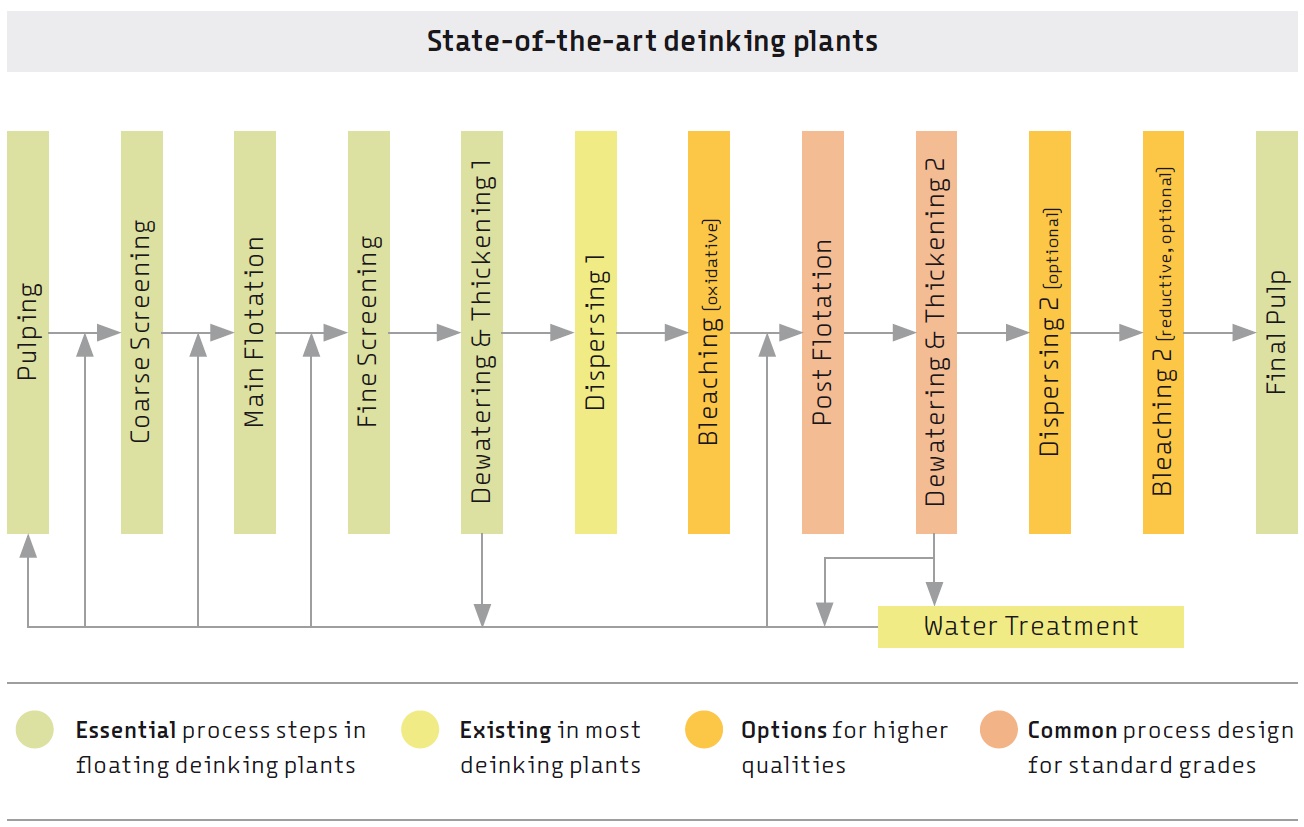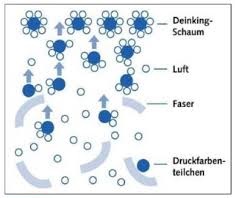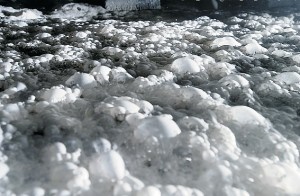P3 7-8/2020 en
What Does it Mean?
Standard Flotation Deinking Process
Education Gap
Printed paper is recycled using the so-called flotation deinking process. Thomas Glaser (Siegwerk) explains the term.
The industrial deinking process.
In the first stage, known as pulping, the shredded, printed paper is made into a pulp by mixing it with water and chemicals. Due to the mechanical forces and the chemicals, the ink films of the prints are broken up and detached from the cellulose fibers. This pulp then goes through a coarse filtration and is transported to the flotation cell, where it is further diluted with water.
In order to deink the small printing ink particles, i.e. to remove them from the paper fiber, air is blown into the pulp. If the printing ink particles are small and hydrophobic enough (10-250 microns), they attach to the rising air bubbles and are thus carried to the surface. The resulting froth can then simply be skimmed away.
Removing the printing ink increases the whiteness of the waste paper. Additional bleaching is used to further increase the degree of whiteness. The cellulose paper fibers can be recycled around 4-6 times before they become too short for waste paper production.
Thanks to recycling by means of flotation deinking, around 70% water and 60% energy can be saved compared to direct paper production. 50% of the deinking sludge and froth are used for the production of bricks - they give the desired fine-pored openings. The other 50% is burned and converted into energy.









